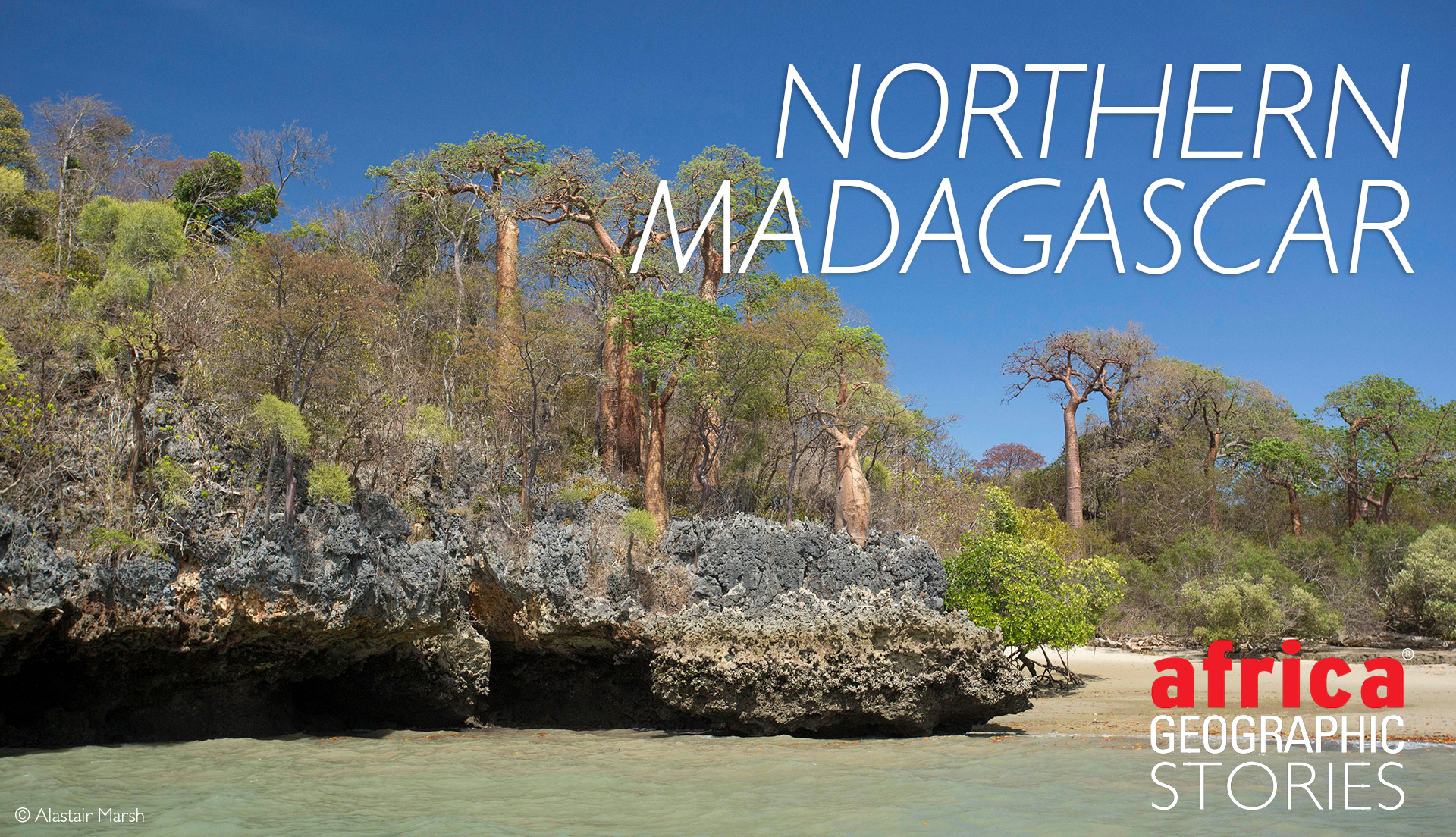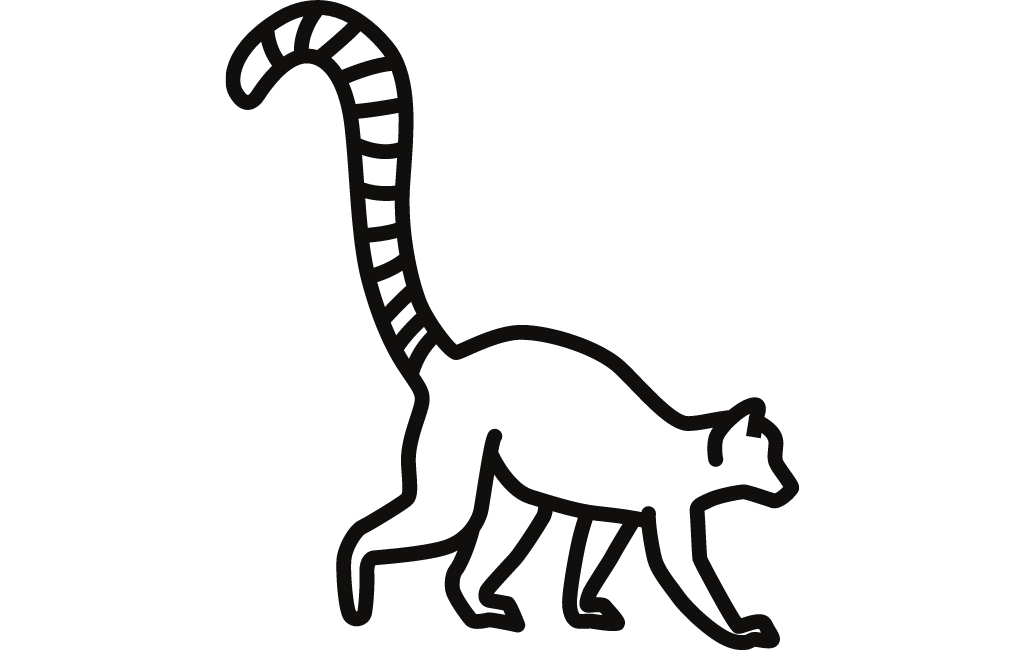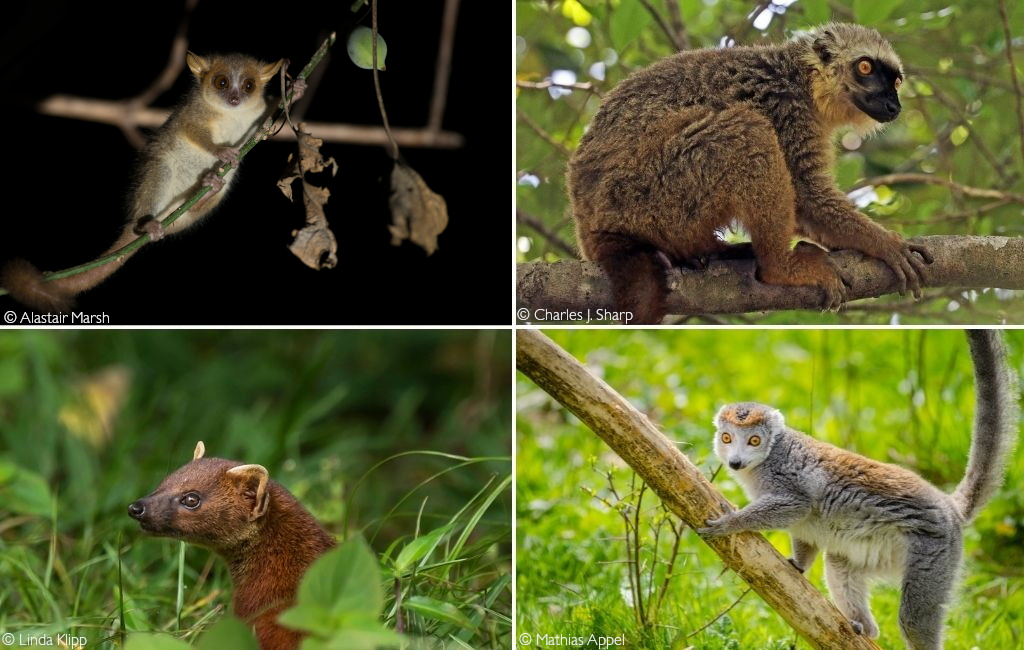
ISLANDS, BEACHES & LEMURS


This time we adventure to northern Madagascar, in our four-part series on this wondrous island. See the resources section at the end of this story for the other three stories in the series.
For the last 88 million years, life on Madagascar has been on its own – creating an island of evolutionary oddities and myriad diverse travel experiences. Sometimes referred to as a “Noah’s Ark” or the “eighth continent” due to its geographic isolation and high levels of endemism, the island of Madagascar is, simply put, enormous. It is approximately 587,000km2 (around two and a half times the size of the United Kingdom). A combination of ocean currents and dramatic topography has created a tapestry of different climates and habitats perfectly suited to the island’s peculiar inhabitants (or the other way round).
The island is home to over 300 recorded birds (60% of which are endemic) and 260 species of reptile – including two-thirds of the world’s chameleon species. There are over 110 species of lemurs spread throughout Madagascar’s protected areas, in a variety of shapes and sizes but all possessing a shared, wide-eyed charisma. Six of the world’s eight baobab species occur only in Madagascar. All in all, the natural history is unique, shaped by the fascinating and beautiful, isolated island habitats.
In an ideal world, a trip to Madagascar would extend over weeks to give the curious traveller every opportunity to explore the magnificent island. Realistically, however, time is usually limited and deciding where to invest one’s attention is guaranteed to create a significant traveller’s quandary. This four-part series is intended to help guide this decision.

Northern Madagascar
The island’s northernmost tip – the “tropical north” – is one of its richest biodiversity hotspots, with lush tropical rainforests and mangroves extending to azure lagoons and white, palm-fringed beaches. Here visitors will find the perfect chance to explore some of Madagascar’s whacky fauna, flora, and scenery in the national parks, before stretching out on the sand to admire the Indian Ocean, cocktail in hand.
The Diana Region of north Madagascar is home to some twenty protected areas, from national parks to “New Protected Areas” and strict nature reserves. These are scattered between picturesque cacao, coffee, and ylang-ylang plantations, while the coastline and the archipelago deliver a tropical paradise escape. From geographical wonders to endemic wildlife, northern Madagascar provides the most efficient opportunity to enjoy the best of Malagasy worlds with the added advantage of being off the main tourist route (with, perhaps, the exception of Nosy Be).


Amber Mountain National Park
Named for the copal deposits of amber resin from the forest’s trees, Amber Mountain National Park is Madagascar’s oldest national park. It is a small (182km2) reserve that packs a significant biodiversity punch. This unique montane rainforest pocket is known for its spectacular waterfalls, green-lit forest paths and crater lakes – a verdant mountain surrounded by arid lands. The tropical oasis was formed on an isolated volcanic massif, which receives more than three times the annual rainfall than the low altitude regions. The forests are decorated by liana-draped trees and orchids, while the floor is carpeted by ferns and lined with thick moss.
Like many of Madagascar’s protected areas, Amber Mountain is home to a treasure trove of unusual wildlife, including a multitude of mammals and an abundance of quirky reptiles. Naturally, the eight lemur species (including the newly discovered and endemic Montagne d’Ambre dwarf lemur) are the park’s flagship attraction, but the forest is also home to a number of Madagascar’s captivating predators. Visitors should keep an eye out for the russet ring-tailed vontsira (ring-tailed mongoose) and the genet-like Malagasy civet. For those with sharp eyes, chameleons such as the endemic Amber Mountain dwarf chameleon are hidden in plain sight on every surface from the leaves and bark to the litter on the forest floor. Imagine the thrill of finding your own Brookesia (dwarf chameleon) in Amber Mountain’s leaf litter-strewn paths.
Like most tropical African forests, Amber Mountain offers exciting birdlife: the endemic Amber Mountain rock thrush, the white-throated rail, Madagascar blue pigeon and even the odd sighting of the endangered Madagascar fish eagle.

Ankarana Special Reserve
and the “grey tsingy”
The Malagasy word “tsingy” is a perfect fit for the landscape of Ankarana Special Reserve, situated around 100km south of Diego Suarez. It translates roughly as a land where you cannot walk barefoot (alternatively, to walk on tiptoes). This, of course, could be applied to a significant portion of Madagascar, much of Africa and all public locker rooms but is particularly well suited to the jagged forest of limestone rocks that create one of the most bizarre landscapes imaginable. Prehistoric (literally – the rocks were formed some 150-million years ago) razor-sharp rocks have kept human advancement at bay, and wildlife has flourished as a result. (A much vaster example of this geology is Tsingy de Bemaraha National Park in western Madagascar.)
The pinnacles of rock in Ankarana rise from the plateau, and a network of well-maintained trails and rope bridges link vantage points, making exploration of the park strenuous but rewarding. Below, hidden within the rock crevices and canyons, are dense sections of dry forest home to one of the highest densities of primates anywhere in the world. Ankarana is a population stronghold of the endangered crowned lemur and Sanford’s brown lemur, both found only in northern Madagascar. It is also one of the few protected areas where sightings of Madagascar’s largest mammal predator – the fossa – are relatively common.

The geography is as fascinating below ground as it is above it. The foundations of the Ankarana Reserve are riddled with caves and tunnels – remnants of a time when the area was an underwater coral reef. The reserve is steeped in the history of the Antankarana people who once sought refuge in these caves, undeterred by the presence of the enormous Madagascan free-tailed bats. Some of the caves remain sacred and are out of bounds for visitors because of local beliefs and taboos. Even more bizarrely, some of these watery channels can only be explored at certain times of the year (November to April) because they are otherwise inhabited by Nile crocodiles! Though the chances of encountering a crocodile are slim, the fact that these creatures have adapted to life in the gloom of a cave for most of the year is astonishing. Though considerably smaller than the crocodiles, massive Oustalet’s, panther chameleons and superbly camouflaged leaf-tailed geckos abound in Ankarana.
Red Tsingy
Between Ankarana and the main city of Antsiranana (previously Diégo-Suarez), a much smaller tsingy-like region exists, referred to as the “Tsingy Rouge”. Here the scarlet sands have eroded to make crimson spires of dried silt. Unlike the uncompromising solidity of the grey tsingy, the Red Tsingy is fragile, and visitors are now prohibited from standing on or among the stalagmites.

The Nosy Be Archipelago
After the rigours of enthralling but rough-and-ready exploration, the final stop in any tour of northern Madagascar must be a visit to one of the region’s pristine coastlines where you can laze on the beach and maybe be lucky enough to revel in the sight of a white-tailed tropicbird gliding over the coastline. Visitors can choose to stop off at the region’s capital – Antsiranana – for a less exorbitantly priced beach holiday or retreat to the seclusion of one of the offshore islands.
Nosy Be translates as “big island” and is one of Madagascar’s most popular tourist destinations. Here the luscious scents of cinnamon, vanilla, frangipani, and ylang-ylang plantations infuse the air, creating an olfactory extravaganza – hence the nickname “perfume island”. Nosy Be is a tropical paradise for beach-lovers, with warm clear waters, coral reefs, and water sports like kite surfing and scuba diving. The thrill of sighting a whale shark off the beaches is also a highlight. Away from the white sands, the Lokobe Strict Reserve is one of the best places in Madagascar to see the endangered, gremlin-like black lemurs.
Nosy Be is also the gateway to some smaller and often uninhabited islands. You might share a reef off Nosy Tanikly with a pod of dolphins, enjoy a beach picnic on the isthmus of Nosy Iranja. Kayaking in the silent dawn around Nosy Sakatia might thrill you with the sound of a leatherback turtle breaking the surface to breathe. While a sunset from Tsara Komba, sunkissed, salty-lipped and holding a Kumquat Rhum Arrange cocktail in hand is the perfect way to celebrate a day well spent.

The ins and outs of exploring Madagascar
Madagascar’s tropical climate is typically enjoyable all year round, though the wet season runs from November to March, usually with minimal winds. February carries the highest risk of fierce tropical cyclones. The cooler dry season from April until October alleviates the worst of the oppressive heat, particularly when hiking on the islands or through Ankarana Special Reserve. The winds pick up at the beaches, making it the ideal time for kite surfing enthusiasts but less pleasant for those who do not appreciate being stung by grains of sand.
There are plenty of budget and camping opportunities in or near all of the destinations mentioned above. It is advisable to travel in Madagascar with a reputable company, but it is possible to hire a car to drive between the various attractions. However, the roads are bad, particularly during the wet season, and a 4 x 4 is essential. That said, road travel is fascinating and often accompanied by the glorious scent of roadside-roasted cashew nuts.

Final thoughts
Northern Madagascar is a fantastical land – a natural evolutionary playground and a human kaleidoscope of cultural influences. Remarkable, offbeat, and enticing, this magical island offers an intoxicating combination of unique wildlife viewing and magnificent scenery. There is far more to Madagascar than our four-part series could ever hope to convey, but there is no question that it is a country with something to offer everyone. Our travel consultants are always on standby to help you plan the Madagascan holiday of your dreams.
Want to go on safari to Northern Madagascar? To find lodges, search for our ready-made packages or get in touch with our travel team to arrange your safari, scroll down to after this story.
Resources
Photographers:
Ken Behrens is a birder, naturalist, consultant, guide, and photographer, who is based in Madagascar. He is the co-author of several books, including Wildlife of Madagascar. His work can be seen at ken-behrens.com
Alastair Marsh’s photography can be seen and purchased from www.alastairmarsh.co.uk


To comment on this story: Login (or sign up) to our app here - it's a troll-free safe place 🙂.![]()




